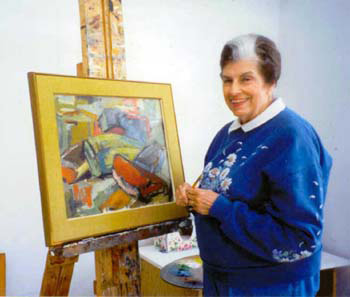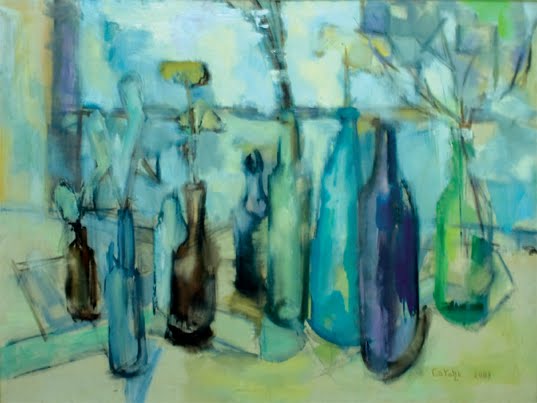CATCHI CHILDS | PRESIDENT OF NAWA FROM 1981-1985
 Unfortunately Ms. Childs was unable to do the interview. We’d like to thank and acknowledge Patricia Goodrich for granting us permission to use a transcript of her 2003 interview with Ms. Childs. We would also like to thank and acknowledge Seven Days magazine in Vermont and posthumously thank and acknowledge Marc Awodey for granting us permission to reprint a review of Ms. Childs work in October 2011. The following is a transcript of Catchi Childs interview that she recorded for Patricia Goodrich’s Voices Underground 2003 Earthwork in Lithuania. Reprinted with Patricia Goodrich’s permission.
Unfortunately Ms. Childs was unable to do the interview. We’d like to thank and acknowledge Patricia Goodrich for granting us permission to use a transcript of her 2003 interview with Ms. Childs. We would also like to thank and acknowledge Seven Days magazine in Vermont and posthumously thank and acknowledge Marc Awodey for granting us permission to reprint a review of Ms. Childs work in October 2011. The following is a transcript of Catchi Childs interview that she recorded for Patricia Goodrich’s Voices Underground 2003 Earthwork in Lithuania. Reprinted with Patricia Goodrich’s permission.
VOICES UNDERGROUND by Catherine “Catchi” Childs
My name is Catchi Childs. I am a painter. Actually I have been painting for seventy years. It’s a very long time. I thought it might be interesting to tell you how I started.
My parents lived on an island in Florida (and by the way I do live in America, in the USA; I live in Manhasset, Long Island). Both my parents were alcoholics. Really I was the only child, and they there more or less interested in what they were doing. They had a captain and a boat, and they used to go fishing every day and sometimes for a week, two weeks at a time and they knew all the important people in fishing and so forth. I was left to my own devices, and so I loved dolls, and I played dolls every day. I had a straw house made of palm trees, and I kept my dolls there.
When I wasn’t playing dolls, I always drew pictures of anything I saw. At twelve years old I wanted to go to art school. I did meet a friend on the mainland, because we were the only family on the island. I wanted to go to art school with her, and my parents thought it wasn’t the thing f or young ladies to do, to spend their time going to art school. My parents never sent me to school. So at that point I didn’t know how to read (I’ve never been a good reader or a speller, but thank goodness I was able to paint (laughter) because that filled up my life). Anyway my parents said no, they would not spend any money to send me to a frivolous thing like going to an art school. Being a very determined person and very willful, I decided I would find a way. On the edge of the island where there was sand all around, I collected shells, and I started making place cards. My mother did buy me the place cards to get started. I found out I could sell them at a gift shop. At the age of twelve I made enough money to pay for that semester It was just a life drawing class and I did that for two years. I sort of got a headstart on a lot of people.
Then my parents sent me away to boarding school. Unfortunately that was the year my father committed suicide. I was fifteen. At this boarding school I went to (it was for prep school and junior college) luckily we had a wonderful, wonderful art teacher. His name was Leon Kroll. He was a master of drawing, and he was doing murals for the Justice Building in Washington at the time and he was very important in that era. Anyway, he noticed that I could draw (I had already had a couple of years of this drawing), so he made a big point of helping me out. I think he was the mainstay of my life.
Eventually, I got married at twenty. By the time I was twenty-six I already had four children. I was going to repopulate the earth (laughter). Anyway, I did at one point go to Hans Hofmann in New York City. Unfortunately I was only there a month and I was only going two days a week because I had all these babies at home. At this time I think I was thirty -two, and I fainted in his class. They got an ambulance and took me to the hospital. I had tuberculosis, so I was in bed for a whole year.
I thought of all the things I had to have, it was very good I had tuberculosis. I had read about artists, and one of the main things artists had was tuberculosis, so I figured I was made. I had the proper disease if I was going to have anything.
One of the funny things when I was in bed — In those days people went to bed — I was still doing anatomy. I had taken art books to bed, and so in the daytime I would draw bosoms and legs and hands and arms, and things like that. From one to two you were supposed to take a nap and I never did. I used to get up and stand on the bed and tape these drawings to the ceiling. As I lay there the hour I was supposed to be sleeping, I would study what I had done. One time I heard the nurse out in the hall of the hospital I was in, “Get a load of the lady in seventeen. She’s some kind of sex maniac. She’s got bosoms and fannies and legs all on her ceiling!” Nobody could quite understand what I was doing while I was in bed.
I am now working at the Vermont Studio Center, and I have been here for a month. The funny thing about this is I came at the age of eighty-one and yesterday I had a birthday. So I’ve been here one month, and I am leaving a year older. Now just figure that one out!
Catherine “Catchi” Childs. Painter. Manhasset, Long Island, New York. Past president of the National Association of Women Artists, Catchi Childs studied with Leon Kroll and Hans Hofmann. Ms. Childs has a distinguished exhibition history in notable New York galleries.
The following article is reprinted from an October 19, 2011 review by Marc Awodey in Seven Days magazine in Vermont. (see article online)
Life Work
Art Review: Catherine “Catchi” Childs, River Arts
by Marc Awodey
Nonagenarian Catherine “Catchi” Childs isn’t an elderly folk artist à la Grandma Moses. She’s an accomplished figurative painter with a sophisticated aesthetic, complex palette and confident, expressive brushwork. River Artsin Morrisville is currently hosting a retrospective of 36 portraits, still lifes and a few landscapes by the artist. Formerly from Long Island, she now lives in Morrisville, but during her long career Catchi’s paintings have been exhibited from England to Japan, and points in between.
 These aren’t unassuming little paintings. “Valley of the Arni,” the largest piece in the show at 54 by 72 inches, is a sun-drenched mountain vista in golden yellows and bands of pale green. The composition is monumental. Diagonals folded into each other aim at a low focal point. The sfumato of aerial perspective renders the most distant chain of mountains pale, introducing light blue and pink planes to the faraway peaks.
These aren’t unassuming little paintings. “Valley of the Arni,” the largest piece in the show at 54 by 72 inches, is a sun-drenched mountain vista in golden yellows and bands of pale green. The composition is monumental. Diagonals folded into each other aim at a low focal point. The sfumato of aerial perspective renders the most distant chain of mountains pale, introducing light blue and pink planes to the faraway peaks.
Catchi is a past president of the New York City-based National Association of Women Artists. She studied with figurative artist Leon Kroll and briefly with abstractionist Hans Hofmann. But older art-historical references have also been important in her work. Reminiscent of Matisse, Catchi’s “Fish Bowl” beautifully presents two goldfish in a round bowl on a small table that is draped in a flowered cloth. Her hues are nearly as vibrant as that earlier artist’s; mauve and reds appear in the background and, in the foreground, yellow floral patterns appear within opulent passages of blue.

The 36-by-16 -inch vertical “Fall Bouquet” has a classic compositional arrangement of acute angles tumbling down the picture plane. The narrative is a floral study, with splashes of bright color cascading over the dark background. The flowers are simplified to geometric forms. The painting’s composition is nearly identical to that of Marcel Duchamp’s “Nude Descending a Staircase.” Both artists constructed images with a logical arrangement of positive and negative space, using strong angles at upper right and lower left. The paintings have a similar arrangement of small and large forms within the central
subject, and deep, dark space beyond the foreground. Whether Catchi consciously adopted Duchamp’s composition hardly matters. The point is, she fully assimilated 20th-century modernism, and abstraction is the basis of many of her still lifes.
In her early thirties, during a Hofmann class, Catchi fainted and was taken to a hospital, where she was diagnosed with tuberculosis. She was bedridden for a year. But Catchi continued to draw during her convalescence, and, according to her website, considered herself oddly lucky. “I thought of all the things I had to have, it was very good I had tuberculosis,” she writes. “I had read about artists, and one of the main things artists had was tuberculosis, so I figured I was made. I had the proper disease if I was going to have anything.” Even without the “proper” disease, Catchi surely would have developed into a substantive artist. But an unflappable attitude toward adversity certainly couldn’t have hurt.
Catherine “Catchi” Childs, River Arts, Morrisville. Through November 7


